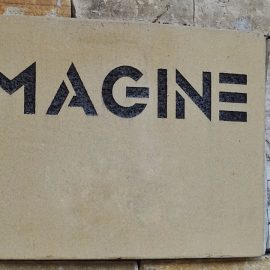

This article is an excerpt from the Shortform book guide to "Thinking in Bets" by Annie Duke. Shortform has the world's best summaries and analyses of books you should be reading.
Like this article? Sign up for a free trial here .
How should a group function? Are there clear group guidelines that shape constructive behavior?
Sociologist R.K. Merton created four rules of engagement for how he thought the scientific community should operate. Thinking in Bets author Annie Duke believes that these group guidelines also work well for a group of people whom you call on to help you make better decisions.
Continue reading to learn about R.K. Merton’s recommended group guidelines.
Using CUDOS as Group Guidelines
Once you’ve formed a group to help you make better decisions (a “decision group”), you’ll need to have clear group guidelines. Duke looks to sociologist R.K. Merton’s rules of engagement for how he believed the scientific community should function, which he described using the acronym CUDOS:
- Communism
- Universalism
- Disinterestedness
- Organized Skepticism
Communism
Data is commonly owned, belonging to everyone. This means that scientists can’t, for example, publish the results of an experiment without also sharing the actual data. That’s part of how reviewers can evaluate whether the results are sound or not.
In a decision group, “sharing data” means being honest about the factors that went into your decision—the data—and providing as much detail as possible, omitting nothing, especially the things you’re tempted to leave out. If you’re reluctant to share a piece of information, it could be because deep down, you think that detail will make you look bad or will run counter to a narrative you’re trying to build—but it’s just that kind of detail that warrants more investigation and critique.
Group guidelines should encourage others to do the same by rewarding them with approval when they share as full and complete a version of their story as they can.
Universalism
All evidence must be treated in the same way, with a standard set of criteria, no matter what the source is.
This doesn’t mean you can’t evaluate whether a source is credible or not—but it means you shouldn’t disregard information without a fair evaluation just because you have negative feelings about the source. We also have to vet information that comes from sources we feel positively about—just because we like that person or source doesn’t mean they can’t be wrong or make mistakes sometimes. We separate decisions from their outcomes; we must also separate information from its source, judging the information on its own merits.
There are a few exercises you can do to start picking up this skill.
1. Before rushing to dismiss someone, make an effort to find one thing that they’re right about or that you agree with. For Duke this meant studying her opponents more carefully before deciding they were bad players just because she wasn’t familiar with their strategy. It can also mean sometimes reading news from sources that hold different political or ideological beliefs from your own and trying to find common ground.
2. When judging a piece of information, imagine if it had come from a different source. If someone you dislike shared that information, would you be less likely to accept it? What if it came from someone you hold in high regard? Pay attention to how much your personal feelings about the source are influencing your judgment of the information.
Disinterestedness
Don’t let conflicts of interest or other biases influence the work.
A conflict of interest can be as obvious as a corporation paying a scientist to produce a study supporting the health benefits of their product. Or it can be as subtle as our tendency toward resulting. If knowing the outcome influences what we think of a decision, then one way to ensure your group isn’t swayed in either direction is to withhold the outcome until after the discussion happens. Group guidelines should encourage you not to tell them if you failed or succeeded at first. See what they think of your choice regardless of how it turned out.
Organized Skepticism
All ideas are subject to scrutiny, criticism, and dissent. Organized skepticism is not argumentative or confrontational—not if everyone is willing to engage with their own uncertainty. You can express doubt and offer a dissenting opinion in ways that acknowledge that you, too, could be wrong.
Group guidelines should reward civil dissent and debate with approval, encouraging healthy discussion and making it part of the group’s norms. For example, professional organizations can set up ways for members to anonymously make suggestions or offer criticism, and reward them by actively addressing the topics that get brought up. And if you’re asking someone for advice, you can make it clear that you’re looking for feedback (and not just support)—and express gratitude when they give it to you.
R.K. Merton’s group guidelines work well for the scientific community, and they can serve your group, as well.

———End of Preview———
Like what you just read? Read the rest of the world's best book summary and analysis of Annie Duke's "Thinking in Bets" at Shortform .
Here's what you'll find in our full Thinking in Bets summary :
- How to get better at making good decisions
- How to work around your biases
- How to evaluate and learn from your past






